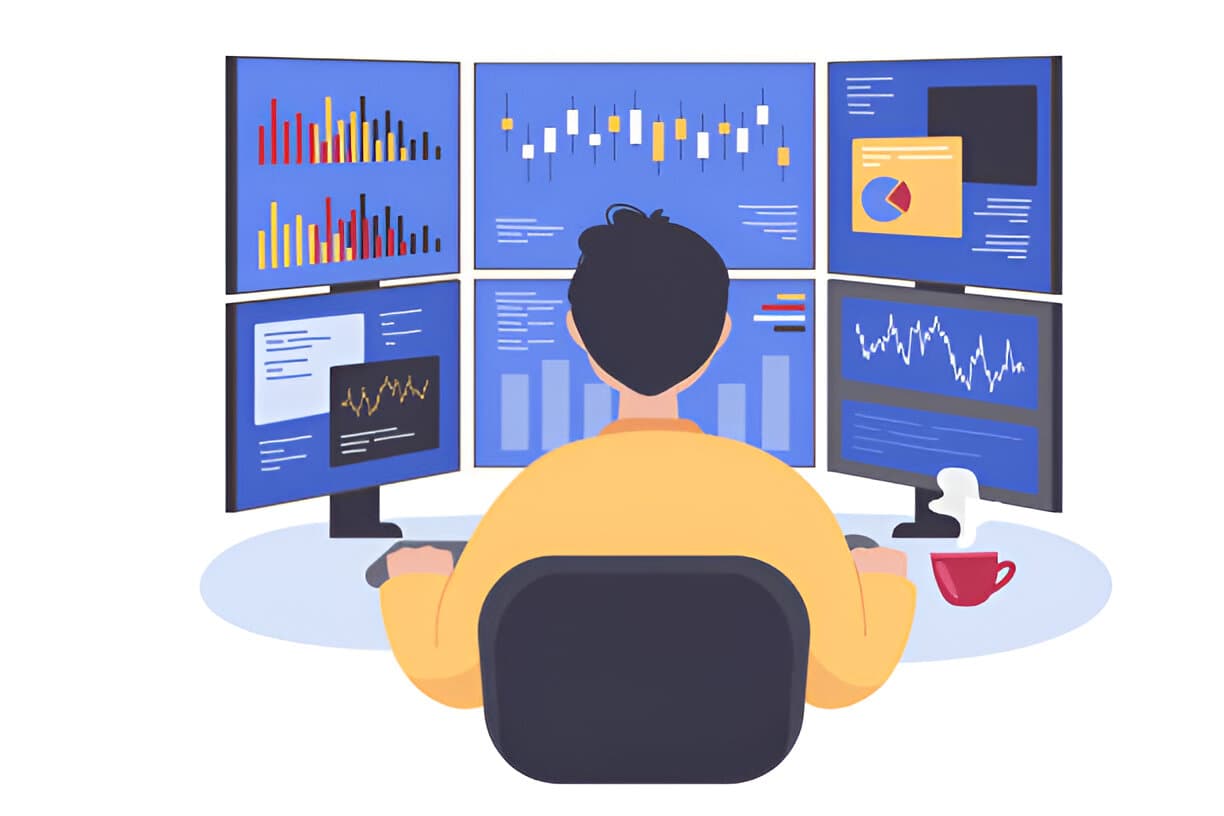Best Methods for Data Collection and Analysis: - In the modern world, data serves as the backbone of informed decision-making. Whether in business, science, healthcare, education, or governance, the importance of accurate and relevant data cannot be overstated. As organizations and researchers strive to enhance their understanding of complex phenomena, choosing the right methods for data collection and analysis becomes critical. This article explores the best practices, tools, and methodologies for efficient data collection and robust analysis, offering practical insights for professionals and students alike.
Introduction to Data Collection and Analysis
Data collection and analysis are interdependent processes that contribute to the validity of research findings. Data collection involves gathering information from various sources to address research questions or business problems. Analysis refers to the systematic examination of this data to extract meaningful patterns, trends, and insights.
Both processes require careful planning, execution, and ethical consideration. Poor data collection leads to unreliable analysis, and even the most sophisticated analytical tools cannot compensate for flawed or biased data.
Principles of Effective Data Collection
Before diving into methods, it’s essential to understand the foundational principles that govern effective data collection:
- Relevance – The data should directly address the research objectives.
- Accuracy – Measures must ensure the data reflects reality with minimal error.
- Completeness – Incomplete data can lead to skewed conclusions.
- Consistency – Uniform collection methods help ensure comparability across samples.
- Timeliness – Outdated data may no longer be valid for current decision-making.
- Ethics – Participants’ privacy and consent must be respected, especially in personal or sensitive data.
Types of Data
Understanding data types is key to choosing the correct collection and analysis methods:
- Quantitative Data: Numerical and measurable (e.g., test scores, sales figures).
- Qualitative Data: Descriptive and subjective (e.g., opinions, experiences).
- Primary Data: Collected directly from the source.
- Secondary Data: Obtained from existing sources like databases or publications.
Best Methods for Data Collection
1. Surveys and Questionnaires
Surveys are among the most popular tools for collecting quantitative and qualitative data from a large population. They can be conducted online, by phone, in person, or via mail.
Advantages:
- Cost-effective
- Scalable
- Customizable to various formats
Best Practices:
- Use clear, unbiased language.
- Include a mix of closed and open-ended questions.
- Pilot test your survey to identify issues before mass distribution.
2. Interviews
Interviews are valuable for collecting in-depth qualitative data. They can be structured, semi-structured, or unstructured.
Advantages:
- Deep understanding of participant perspectives
- Opportunity for clarification and follow-up
Best Practices:
- Use an interview guide to maintain focus.
- Establish rapport to encourage openness.
- Record responses for accurate transcription and analysis.
3. Observations
This method involves systematically watching and recording behaviors or events as they occur naturally.
Advantages:
- Real-time data
- Useful in behavioral studies or ethnographic research
Best Practices:
- Define observational criteria in advance.
- Remain unobtrusive to avoid influencing behavior.
- Use video/audio recordings if applicable.
4. Focus Groups
Focus groups involve guided discussions with a small group of participants on a specific topic.
Advantages:
- Generates rich qualitative data
- Encourages idea sharing and debates
Best Practices:
- Limit group size to 6–10 people.
- Use a trained moderator.
- Ensure balanced participation to avoid dominance by a few voices.
5. Experiments
Experiments are primarily used in scientific and social research to test hypotheses in controlled environments.
Advantages:
- High reliability
- Establishes causality
Best Practices:
- Use control and experimental groups.
- Randomize assignment to reduce bias.
- Monitor external variables.
6. Document and Record Review
This involves analyzing existing data from reports, records, logs, and archives.
Advantages:
- No need for direct contact with subjects
- Often cost-effective
Best Practices:
- Verify the credibility and accuracy of sources.
- Be mindful of the context in which data was originally collected.
7. Online Tracking and Analytics
Digital platforms enable passive data collection via cookies, user behavior tracking, and app usage.
Advantages:
- Real-time data
- Scalable to millions of users
Best Practices:
- Ensure compliance with privacy laws (e.g., GDPR).
- Use tools like Google Analytics, Hotjar, or Mixpanel.
- Combine with user feedback for deeper insight.
Tools and Technologies for Data Collection
- Google Forms / Microsoft Forms – For customizable surveys.
- SurveyMonkey / Qualtrics – Advanced survey design and analytics.
- Dovetail / NVivo – For qualitative data management.
- Tablets and Mobile Apps – Ideal for field research and real-time data entry.
- Web Scraping Tools – Automate data collection from online sources.
Best Methods for Data Analysis

Data analysis transforms raw information into actionable insights. The choice of method depends on the nature of the data and the questions being asked.
1. Descriptive Analysis
Summarizes data using statistics like mean, median, mode, and standard deviation.
Use Cases:
- Market trends
- Customer satisfaction reports
2. Inferential Analysis
Draws conclusions about a population based on sample data, using tools like hypothesis testing and confidence intervals.
Use Cases:
- Clinical trials
- Academic research
3. Predictive Analysis
Uses historical data to forecast future outcomes using machine learning or regression models.
Use Cases:
- Sales forecasting
- Risk assessment
4. Qualitative Analysis
Involves coding and thematic analysis of non-numeric data such as interview transcripts.
Use Cases:
- Case studies
- Ethnographic research
5. Content Analysis
Analyzes text, media, or communication content systematically to interpret patterns.
Use Cases:
- Social media sentiment analysis
- Policy review
Tools for Data Analysis
- Excel / Google Sheets – For basic statistical analysis and visualization.
- SPSS / SAS – Widely used in academic and business statistics.
- R / Python – Open-source platforms ideal for advanced analytics.
- Power BI / Tableau – Business intelligence tools for interactive dashboards.
- Atlas.ti / NVivo – Specialized in qualitative data coding and analysis.
Data Visualization
Visualization plays a crucial role in communicating insights effectively. Good visuals can uncover trends not visible through numbers alone.
Best Practices:
- Choose the right type of chart (e.g., pie, bar, scatter plot).
- Avoid clutter—simplicity enhances understanding.
- Use colors and labels thoughtfully for accessibility.
Ensuring Data Quality
Regardless of the methods used, maintaining high data quality is non-negotiable. This includes:
- Validation – Cross-checking for accuracy
- Cleaning – Removing duplicates, correcting errors
- Normalization – Standardizing formats and units
- Imputation – Dealing with missing data appropriately
Ethical Considerations
Data collection and analysis must adhere to ethical guidelines:
- Informed Consent – Participants should understand and agree to the data use.
- Anonymity and Confidentiality – Protect personal data from unauthorized access.
- Bias Reduction – Avoid leading questions or sampling errors.
- Transparency – Disclose methodology and limitations.
Challenges and How to Overcome Them
1. Low Response Rates
- Offer incentives
- Simplify forms
- Use follow-up reminders
2. Data Overload
- Use sampling techniques
- Focus on relevant metrics
3. Bias
- Employ random sampling
- Use double-blind methods where applicable
Case Study: Combining Methods for Impact
A healthcare startup wanted to understand patient satisfaction and improve service delivery. They used:
- Surveys for broad quantitative feedback.
- Interviews to dig deeper into concerns.
- Web analytics to observe behavior on their appointment platform.
- Tableau dashboards to visualize the data for decision-making.
As a result, they identified specific pain points in the booking system, redesigned the interface, and saw a 20% improvement in patient satisfaction scores.
Conclusion
The art and science of data collection and analysis are crucial to success in almost every field today. While technology has advanced, the core principles—accuracy, ethics, and relevance—remain timeless. By choosing appropriate methods, utilizing the right tools, and adhering to best practices, individuals and organizations can transform raw data into meaningful knowledge and drive better outcomes.
Also Read- What is Research Data Analysis

